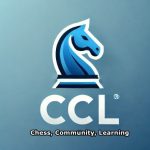Chess Math has arrived
Come into the future with us.
This is the announcement of the CCL meeting on Sunday, December 1, 2024.
We meet at 1PM in the second floor of Harrison on Fifth, 579 W. 5th Avenue, Columbus, Ohio 43201. This is near Grandview and opposite to Batelle. Parking is available here outside the building but also in the cost free parking garage, as well as next door at the Hyatt hotel. This is an upscale senior living building and every child not yet in high school is required to be accompanied at all times by a responsible adult. The lectures will be given with the aid of a TV screen to display notes.
1:00PM - 1:30PM. Meet and greet and blitz chess. Time to get settled into the venue.
1:30PM-2:30PM. Mathematical Chess/1. Lecture presentation by Harvey M. Friedman, Distinguished University Professor of Mathematics, Philosophy, Computer Science Emeritus, and Professor of Music for ten years, all at the Ohio State University in Columbus.
Harvey will talk on several mathematical aspects of chess that he thinks makes chess a particularly rich untapped resource for mathematics and computer education at the elementary, middle, high school, undergraduate, and postgraduate levels, as well as a rich source for challenges at the professional mathematical research level.
Harvey is planning a series of lectures on Mathematical Chess, to form the basis for a book on the topic.
2:30PM - 3:30PM. Informal discussions and more chess.
3:30PM - 4:30PM. GoChess. In the first half Harvey will present his general philosophy and rules of GoChess, generalized GoChess, and Fischer GoChess. In the second half, Alan will discuss some strategy and go over a game or two he has played with Harvey.
4:30 - 6PM. Informal discussions and GoChess playing.
NOTES: GoChess combines the spirit of Go together with standard Chess. GoChess is played with the standard chessboard and pieces with no extra pieces available for pawn promotions. GoChess has two phases. In the first phase (the Go like phase) the players alternately place all 32 pieces on the empty board with no checks allowed. In the second phase the players play standard chess starting from the position just set up. As the CCL community develops interest and experience with GoChess, the plan is to organize a CCL GoChess tournament with $1000 in prize money. A trial tournament is planned to qualify for the prize tournament.
We attach some notes by Harvey concerning ideas planned for the Mathematical Chess/1 lecture. Hie Lecture will touch lightly over 1 - 5 with subsequent lectures going into more detail.
1. Very basic mathematics at the elementary school level. Chess squares as points in geometry, (i,j), 1 <= i,j <= 8, 8x8 = 64 squares. identifying and counting rows, columns, (chess ranks, chess files), diagonals, planar addition and subtraction, black/white squares mathematically. But light on algebra. Etc.
2. Basic mathematics at the middle school level. Thorough treatment of 1 with standard mathematical notation. Exact mathematical descriptions of the way the pieces move and capture. Pawn, nite, bishop, rook, queen, king distances between squares. Symmetries of the chessboard treated mathematically. Etc.
3. Mathematics at the high school level. Mathematical definition of a (two person, perfect information, 0,1/2,1 payoff) game. Mathematical definition of a winning and of a drawing strategy. Strategy theorem stated carefully (not proved). Showing that chess is a game through an exact mathematical description of the rules of chess. Retrograde analysis used for creating endgame databases. Retrograde analysis theorems stated carefully (not proved). Chess distances between squares (not proved).
4. Mathematics at the gifted high school level and undergraduate level. Proofs of theorems stated in 3. Game trees and basic ideas in chess engine search.
5. Mathematics at the graduate level and the professional mathematical research level. Work in progress will be discussed in future lectures.
